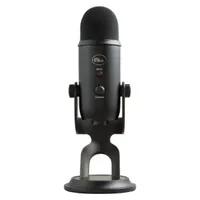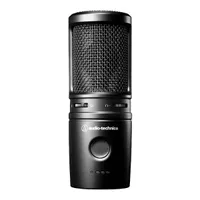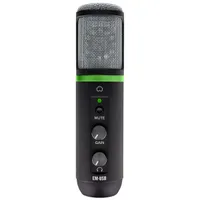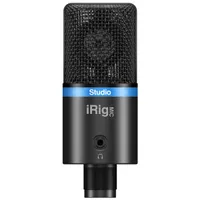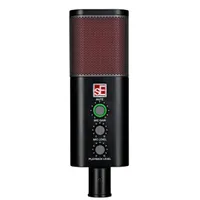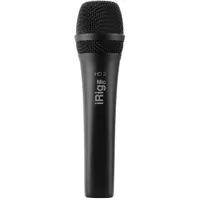Best budget USB microphones 2025: Get creative and sound better for less
Our expert pick of the top cheap USB mics for streaming, podcasting, recording, gaming, work calls, and more
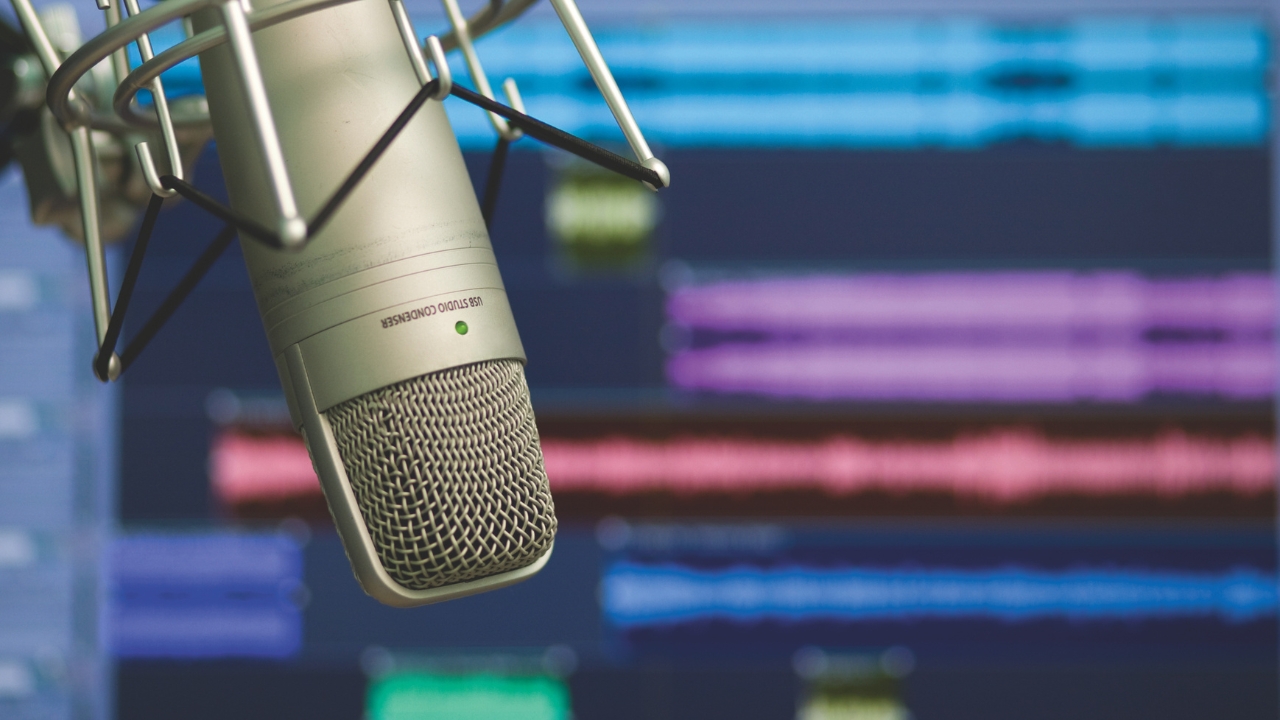
It's never been easier to step into the world of content creation thanks to the abundance of online communities for pretty much anything you can think of. The demand for new content is a consistently increasing one, and armed with one of our best budget USB microphones and a laptop, there's no reason you can't become a content creator yourself.
You might be thinking that you need some engineering or recording experience to get started doing this, but the cheap USB microphones in this guide allow you to simply 'plug-and-play', leaving you to concentrate on exploring your interests to an audience. All you'll need to do with any of these microphones is plug the USB cable into your laptop, tablet, or smartphone, install drivers if you're on Windows, and you'll be ready to go. No mixer or audio interface required.
If you want to do covers or record yourself singing, we'd go for the PreSonus Revelator, which is amongst the best in terms of audio quality in this guide. If you're after a podcasting microphone, then you'll want to check out the Rode Podcaster for the best quality when it comes to spoken word.
The current line-up of budget USB mics represents a significant leap forward from their predecessors - both in terms of features and value for money - showing the remarkable growth and maturation of the technology. In this guide, we’ll delve into the world of the best budget USB microphones and explore some of the top contenders available today.
Our top picks

The Revelator packs in a quality condenser mic capsule with a fully-fledged audio interface, while Loopback makes it easy to record audio from another application, such as Zoom.

The Rode Podcaster leaves you in no doubt as to what its intended use is. We found the build quality to be amazing, while sound quality is superb, breathing magic onto speech in particular, and providing top quality performance right out the box.
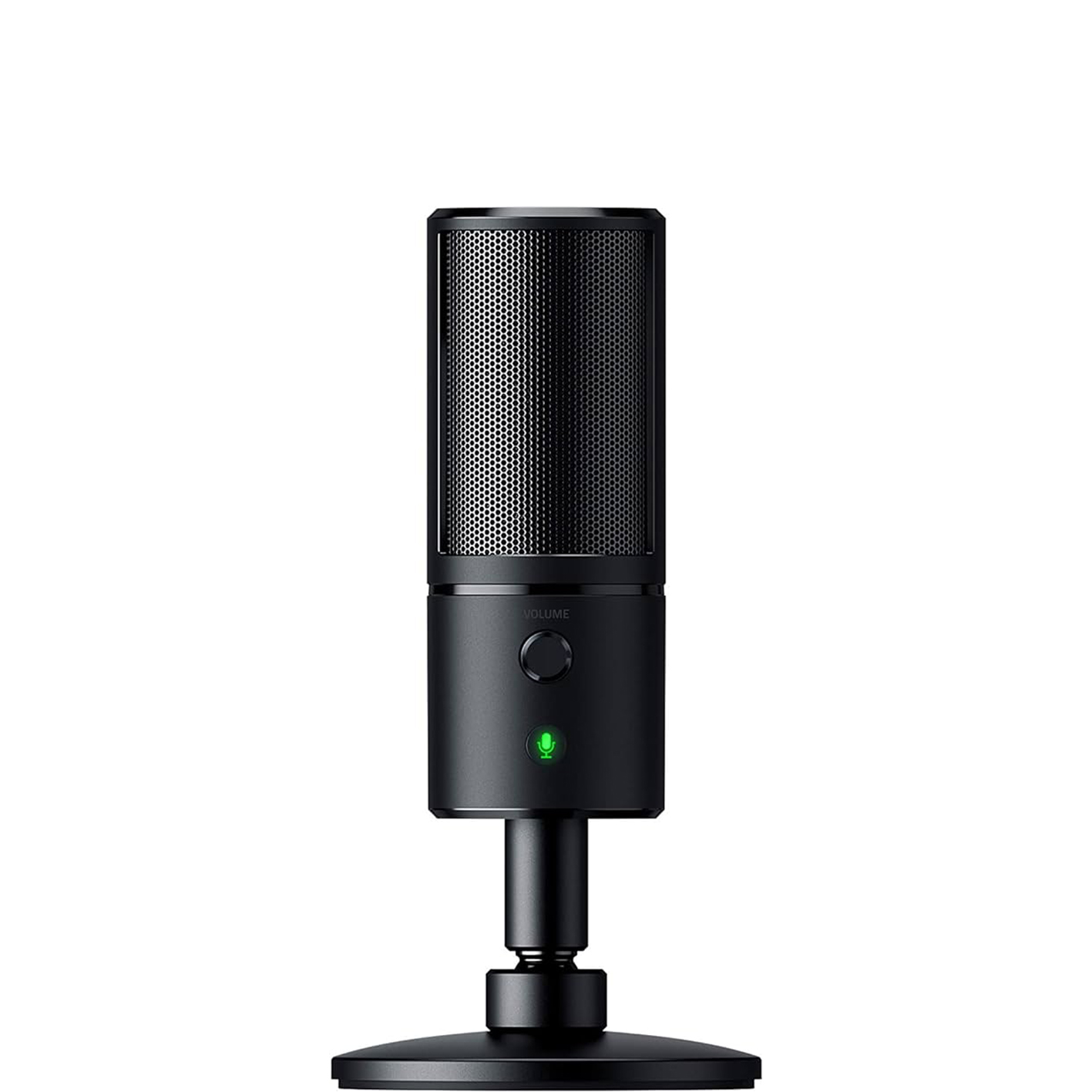
The Seiren X is small, nicely designed and features an integrated base so there are no extra accessories needed. It does the job for which it’s intended very nicely, and all for a very attractive price.
Best for vocals

Specifications
Reasons to buy
Reasons to avoid
✅ You want to record vocals: Of all the mics on test for this guide, the Revelator performed the best in our tests, delivering crisp, clear sound.
❌ You need a mic that looks good on camera: The Revelator isn't the prettiest option on this list, so if looks are important, this isn't the one for you.
Some USB microphones on this list offer much more than basic microphone duties. The Presonus Revelator, if you can excuse the bizarre name, is one such offering, packing in a quality condenser mic capsule with a fully-fledged audio interface.
Its biggest trick is with something called Loopback, which takes care of the otherwise tricky task of recording audio coming from another application. You might, for example, want to capture the audio from a Zoom call, or your gaming stream, which isn’t as easy as it sounds. This alone opens it up to a wider audience, so kudos to Presonus for that.
It’s not the most attractive mic on the list, thanks in no small part to the mic base, but look past that and you’ll find a highly capable, great sounding mic with a few tricks that none of the others here can compete with.

"The PreSonus Revelator really does reveal a lot once you explore its many features. The $1,000 software bundle impresses with its sheer volume but the real power is in the internal processing and easy-to-use UC software. It's the most flexible microphone in its field and price range, excellent for gamers, musicians, live streamers, and podcasters."
Read more: PreSonus Revelator review
Best for podcasting
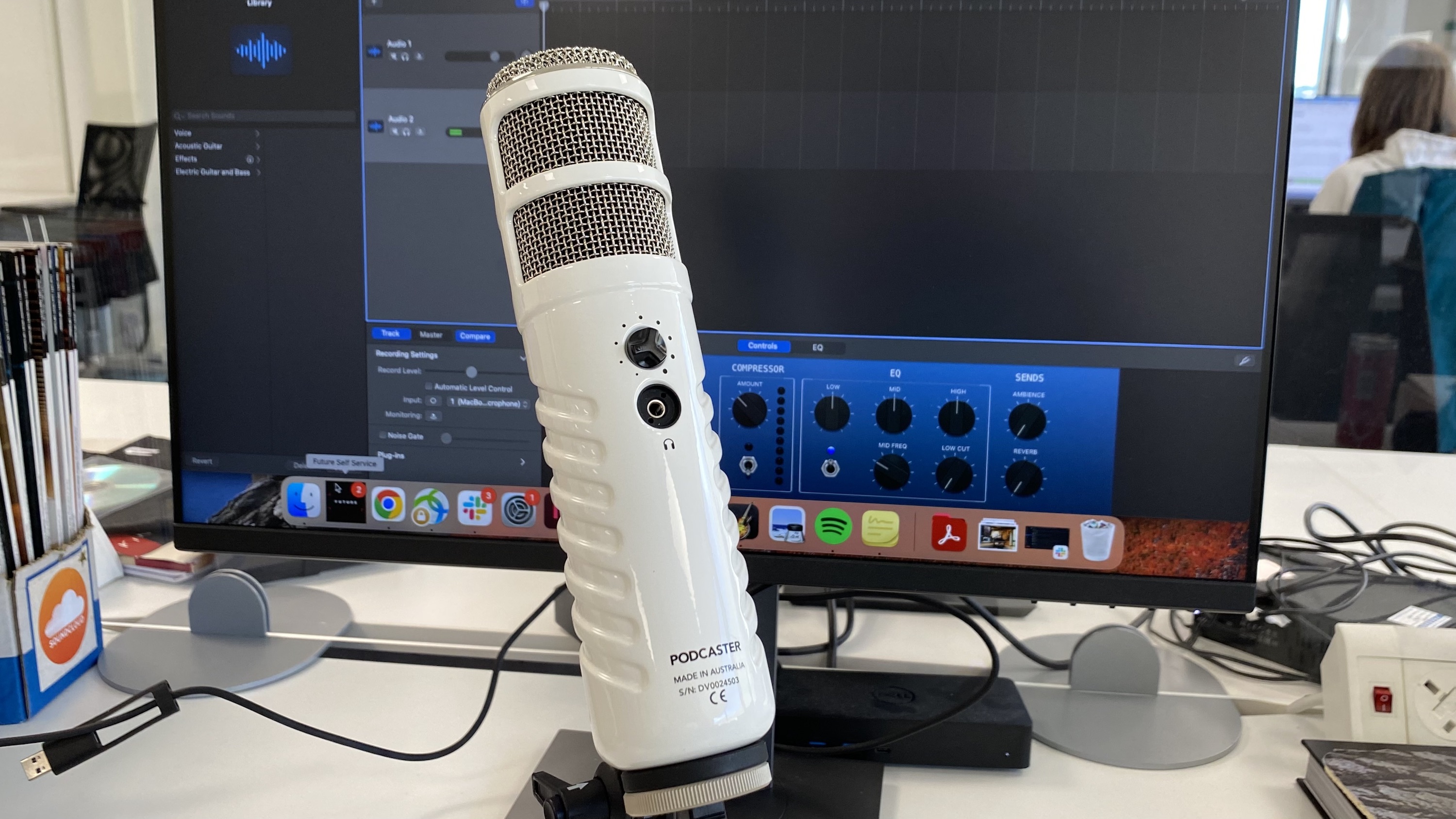
Specifications
Reasons to buy
Reasons to avoid
✅ You're a podcaster: As the name suggests, the Podcaster is aimed squarely at podcast creators and it does that job brilliantly.
❌ You don't want to pay extra for a tripod or base: The Rode Podcaster doesn't come with a tripod or desktop mount, so you'll need to factor extra into your budget.
There’s a lot to be said for buying a specialist tool for a specialist job. Where other mics on this list play up their versatility, the Rode Podcaster leaves you in no doubt as to what its intended use is - there's a reason it's the number one choice in our best budget podcasting microphones guide.
The Podcaster is a heavyweight mic - literally - without much in the way of frills. You get one pickup pattern, nothing in the way of pads or filters, and the package doesn’t even come with a tripod. This could be annoying for anyone starting up, but then this mic is perhaps intended for users upgrading from an existing mic to something suitable for a specific purpose.
In our tests we found the build quality to be amazing, with full metal construction giving the Podcaster a nice heft, although be careful once it’s mounted as its weight can cause it to topple easily. Sound quality is however superb, breathing magic onto speech in particular, and providing top-quality performance right out the box.

"It’s well made, nicely designed, and does a superb job of capturing a version of your voice which sounds great. The built-in pop filter and shock mount mean there’s less extra gear you’ll need to take full advantage, and the USB connectivity means you need only the mic and a laptop to start your own podcast empire."
Read more: Rode Podcaster review
Best for gaming
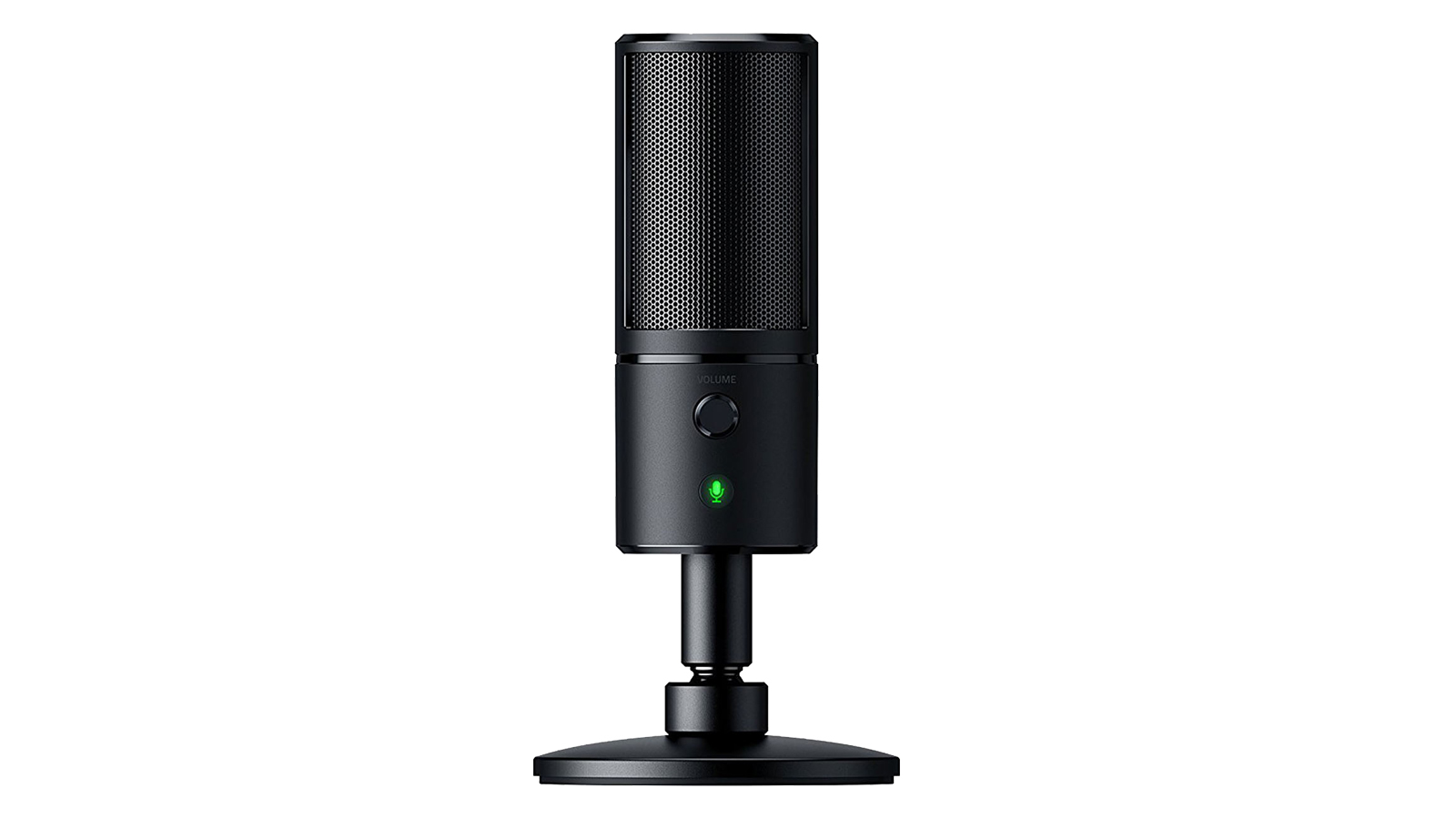
3. Razer Seiren X
Our expert review:
Specifications
Reasons to buy
Reasons to avoid
✅ You're a gamer: This mic looks and sounds the part, delivering a clear vocal you'll hear through even the busiest game audio.
❌ Audio is important to you: As more of a gaming mic, the Seiren X is overly sensitive and shouldn't be your first option for serious voice recording applications.
Gamers and streamers know the importance of a clear voice channel. Whether it’s making yourself heard in co-op, or ensuring viewers can follow your streaming adventures, a decent USB mic can make all the difference. And where it used to be traditional mic brands that had the monopoly, now gaming brands like Razer are getting in on the act.
The Razer Seiren X is a great example. You can tell from the aesthetic which users will gravitate towards this, but even if you’re not part of the RGB faithful, there’s a lot to like here and we got on great with it in our tests.
The Seiren X is small, nicely designed and features an integrated base so there are no extra accessories needed. It does the job for which it’s intended very nicely, and all for a very attractive price indeed.

"The main feature that the Seiren X offers is its pickup pattern. This dictates from where the mic will ‘accept’ incoming audio, and will ensure sound is rejected from elsewhere. With the Seiren X, there is a super-cardioid pattern, meaning the mic will only take in sound from a specific axis, i.e. right in front of it. This is ideal for desktop speech applications, where the mic does a great job of picking up the voice while rejecting sounds coming from outside that area."
Read more: Razer Seiren X review
Best streaming

Specifications
Reasons to buy
Reasons to avoid
✅ You want a simple mic that does the job: The WavoPod is a no frills mic designed to do one job without costing a bomb.
❌ You need something robust: This isn't a particularly sturdy mic, so if you need more of a workhorse, look elsewhere.
Video creators will likely be familiar with Joby, on account of its famous Gorillapod tripod clamps. With the Joby Wavo Pod, it has now branched out to include a simple USB-powered microphone in the line-up, and we found it to be well worthy of bearing the Joby name.
We’d have doubts over how robust the Wavo Pod is, on account of its lightweight plastic construction, but as a pure plug-and-play mic with little in the way of frills, it’s an easy one to recommend. Pair it with the accompanying boom arm for a great little low-cost desk setup that can cover a lot of streaming needs on a budget.
It works really well with speech, delivering excellent clarity and great frequency response. It's a little lacking in the low-end, but that's totally forgivable considering the cost. We love the on-mic headphone output for easy monitoring, and multiple mounts on the mic itself make it versatile enough for a variety of setups.

"In general, the Wavo Pod’s speech capture was crisp, clear, and about as good as you’d expect at this price point. Bonus points for the on-mic headphone output, meaning you can simply monitor your audio before it hits the recording software so there are no nasty surprises when you come to edit it later."
Read more: Joby Wavo Pod review
Best condenser

Specifications
Reasons to buy
Reasons to avoid
✅ Versatility is important to you: If you have multiple recording scenarios to contend with, the Lyra is versatile and tweakable enough to cover you in most cases.
❌ You prefer modern looks: Let's face it the Lyra looks like a vintage microphone. That may appeal to some, but could prove divisive amongst the YouTube and Twitch set.
The worthy recipient of NAMM 2021 Tec Award, the Lyra is a rather ingenious do-it-all budget USB microphone that represents astounding value when you consider its comprehensive multi-use feature set.
Hidden within its smart retro futuristic metal body is an array of four condenser mic capsules, set up in a double bank stereo configuration. One pair of capsules faces towards the front, while the other faces towards the rear, providing all-round coverage.
The clever bit is that you can choose from four capture modes to best suit your subject and artistic intentions: Front, Front & Back, Tight Stereo and Wide Stereo.
Front mode will suit most recording applications, from podcasting and voiceovers to vocals, while Tight Stereo and Wide Stereo are a godsend for recording multiple members of an ensemble or wide ambient spaces.
Front & Back caught our attention most because, just like a Figure-8 mic, it enables podcasters to interview guests without having to fork out for an additional mic, or suffer the complexity of setting one up. This mode is also perfect for recording a singer and an instrumentalist, or two instrumentalists – most duos, really.
What you’re getting here, for a street price of around $/£150, is a mic from a reputable brand that can handle just about anything. If you’re starting out, have a limited budget and don’t yet have a firm idea of what you’ll be recording then the Lyra is a great investment.

"It performs better as a 'one mic-fits all' solution for a range of studio tasks, even though it is quite clearly aimed at the world of digital casting. We found that with pretty much anything we threw it at, it performed well above our expectations."
Read more: AKG Lyra review
Best dynamic

Specifications
Reasons to buy
Reasons to avoid
✅ You want a mic that will work in various rooms: Whether you're recording in a studio or a busy cafe, the MV7 will produce great results every time.
❌ You're on a budget: Of course, this is a guide to budget mics, but we couldn't not include the MV7 as it's an excellent and great value mic. But it might be near the top of your budget.
Yes, we know. At over $200 the MV7 isn’t really a ‘budget’ USB mic option but we’ve included it anyway because it is Shure’s cut-price version of its venerable SM7B, the choice of pro podcaster and voiceover artists the world over. It also deserves a place here because it’s a darned fine mic.
So, what makes it special? Unusually for a USB mic it’s dynamic, which means it’s an excellent performer in less than acoustically perfect rooms. If, like most podcasters, you’re broadcasting from a small spare bedroom or larger bare space, with undesirable sound bouncing off the walls and ceilings, then this is one of the best mics to tame your surroundings. Let rip with the MV7 and you’ll find that your voice shines through.
It's also a robust little mic that’s built to last, with a quality metal body and a durable mount that makes it easy to place anywhere without obscuring your face.
The icing on the cake is the included easy-to-use MOTIV software that provides a plethora of added functionality including auto gain, EQ, a limiter, a compressor and more. Fundamentally though, this is a truly great sounding microphone that will flatter most voices. Which is what really matters.

"What impressed us about the Shure MV7 was the fact it aims to do two things, and it achieves them both successfully. For less tech-savvy users, the MOTIV app and ease-of-use you get from the USB connection is ideal. It works in exactly the way you’d want it to, and is as simple as it gets thanks to helpful tools like the auto-level mode and voice isolation technology. Put simply, if you’ve got a voice it’ll sound great through the MV7. "
Read more: Shure MV7 review
Also consider
For us, those top six microphones should have you covered for the majority of creative needs out there. We appreciate there's not a one size fits all solution for every single person, so here are some more great cheap USB mics we've reviewed.
Blue Microphones Yeti
Condenser | Micro USB | Cardioid, Bidirectional, Omnidirectional, Stereo
One of the first USB microphones on the scene was the Blue Microphones Yeti which is still, over a decade since it launched, one of the best-selling mics on the market. It achieved popularity at first thanks to its simple operation, great design and versatility from its four separate pickup patterns, which allowed it to shine in a variety of different situations.
★★★★★
Read more: Blue Microphones Yeti review
Audio-Technica AT2020USB-XP
Condenser | USB-C | Cardioid
Audio Technica magicked up the USB-C connected AT2020USB-XP, which builds on the existing (and still available) AT2020USB, with automatic gain control and built-in active noise cancelling which all help make life that little bit easier. This model can also record up to 24-bit, which is way more precise than the 16-bit of the very first model.
★★★★½
Read more: Audio-Technica AT2020USB-XP review
Rode NT-USB
Condenser | Micro USB | Cardioid
Another of the first dedicated USB mics on the scene, the Rode NT-USB isn’t quite as old as the Blue Yeti but it has been around long enough to prove its credentials. As a first USB mic for podcasters and musicians, we found it to be a superb option. The sound quality is high enough to make it suitable for acoustic instruments like guitars and strings, with the condenser pickup drawing plenty of nuance from the sound, while for voice work it also shines.
★★★★½
Read more: Rode NT-USB review
Mackie EM-USB
Condenser | USB-C | Cardioid
Mackie is well respected for creating low-cost (but very well-made) audio gear and with the Mackie EM-USB there’s now a great, entry-level option for budding podcasters. The EM-USB features on-mic control for input gain and headphone levels, while the USB-C connection will ensure reliable data transfer of your recordings.
★★★★☆
Read more: Mackie EM-USB review
IK Multimedia iRig Mic Studio
Condenser | Micro USB | Cardioid
IK Multimedia has a good heritage in creating recording and production gear designed around your smartphone, tablet, or computer. Its long-standing iRig sub-brand has delivered audio interfaces and other connectivity products for a while, but with the iRig Mic Studio and its stablemates, there’s now a nicely stocked range of microphones for a range of different purposes.
★★★★☆
Read more: IK Multimedia iRig Mic Studio review
sE Electronics Neom USB
Condenser | USB-C | Cardioid
sE touts the NEOM as a professional podcaster or content creator mic, and its team of engineers has clearly invested a lot of thought in its design. It’s a large diaphragm condenser, which means it’ll add a pleasing depth to most voices as well as a rich character to many instruments. It may be a little on the tall side, but when positioned in its stand, on a desk, the capsule is at near optimal height to speak into. So, it’s very easy to position.
★★★★☆
Read more: sE Electronics Neom review
IK Multimedia iRig Mic HD 2
Condenser | Micro USB | Cardioid
Sometimes products find themselves a niche and become synonymous with that role. The IK Multimedia iRig Mic HD 2 is one such mic, having found favour with roving reporters and journalists the world over. The reason is simple; by hooking the iRig Mic HD 2 to your smartphone or tablet, you have one of the best quality portable recording solutions on the market - certainly at this price bracket.
★★★★☆
Read more: IK Multimedia iRig Mic HD 2 review
How to choose

If you're not well-versed in the intricacies of music studios or have never had a compelling reason to own one, embarking on a journey to find the perfect budget USB microphone might appear quite intimidating. The good news is that it doesn't have to be, and we're here to demystify the process. Especially when we're talking about budget-friendly options (let's say, under $/£200), you'll discover a treasure trove of high-quality, thoughtfully crafted microphones that can cater to a wide range of needs.
In your case, this might mean a microphone gracing your desk to elevate your streaming setup. It could be your initial investment as you venture into the world of podcasting. Or perhaps it's a versatile tool for your professional life, aiding in video calls or capturing interviews. Regardless of your specific scenario, a decent USB microphone can work wonders.
Connectivity
MusicRadar's got your back
The best feature every USB mic shares is USB connectivity. Up until quite recently, the vast majority of mics had bulky XLR connectors that added expense, weight and the complexity of requiring a separate audio interface. The USB standard has enabled mics to become smaller, lighter, cheaper and far less complicated to use for amateur and even pro-am applications. Need a small, portable mic that can sit connected directly to your laptop in your studio, yet can also be easily carried with your phone to record interviews in the field? USB is your friend.
Looks
My mother used to reassure me that looks aren’t important. Sorry mum, you were wrong. If you’re a vlogger or content creator who regularly posts to YouTube or Vimeo then you’re going to want a mic that looks the part. Beauty is in the eye of the beholder, so that may be a smaller mic that doesn’t obscure your face when you’re talking, or it could be one that best matches the aesthetic of your set.
The big brands are producing some fantastic looking mics these days, so there’s really no need to settle for an ugly block of black plastic anymore. Whether you go unobtrusive, or loud ’n’ proud, is up to you.
Functionality
Most budget USB mics will have a few basic features and controls, such as a mute button, a headphone socket, a gain control, a volume control and a mix control. The gain control boosts the mic’s signal strength so that you can get a good, clean recording. Dial in too little gain and your subject will sound quiet, with a lot of intrusive noise. Too much and your recording will sound clipped and distorted.
The volume knob may be combined with the mix dial, but either way, these controls enable you to monitor both your subject and any sounds emanating from your laptop whilst recording. For example, a singer will be able to monitor how their live vocal sounds against tracks playing on a DAW or, depending on the set-up, a podcaster may be able to hear other guests contributing to a discussion.
Less commonly, controls may be included to switch polar patterns, attenuate the input level (known as PAD) or, in the case of a mic such as the AKG Lyra, select particular capsules from an array.
FAQs
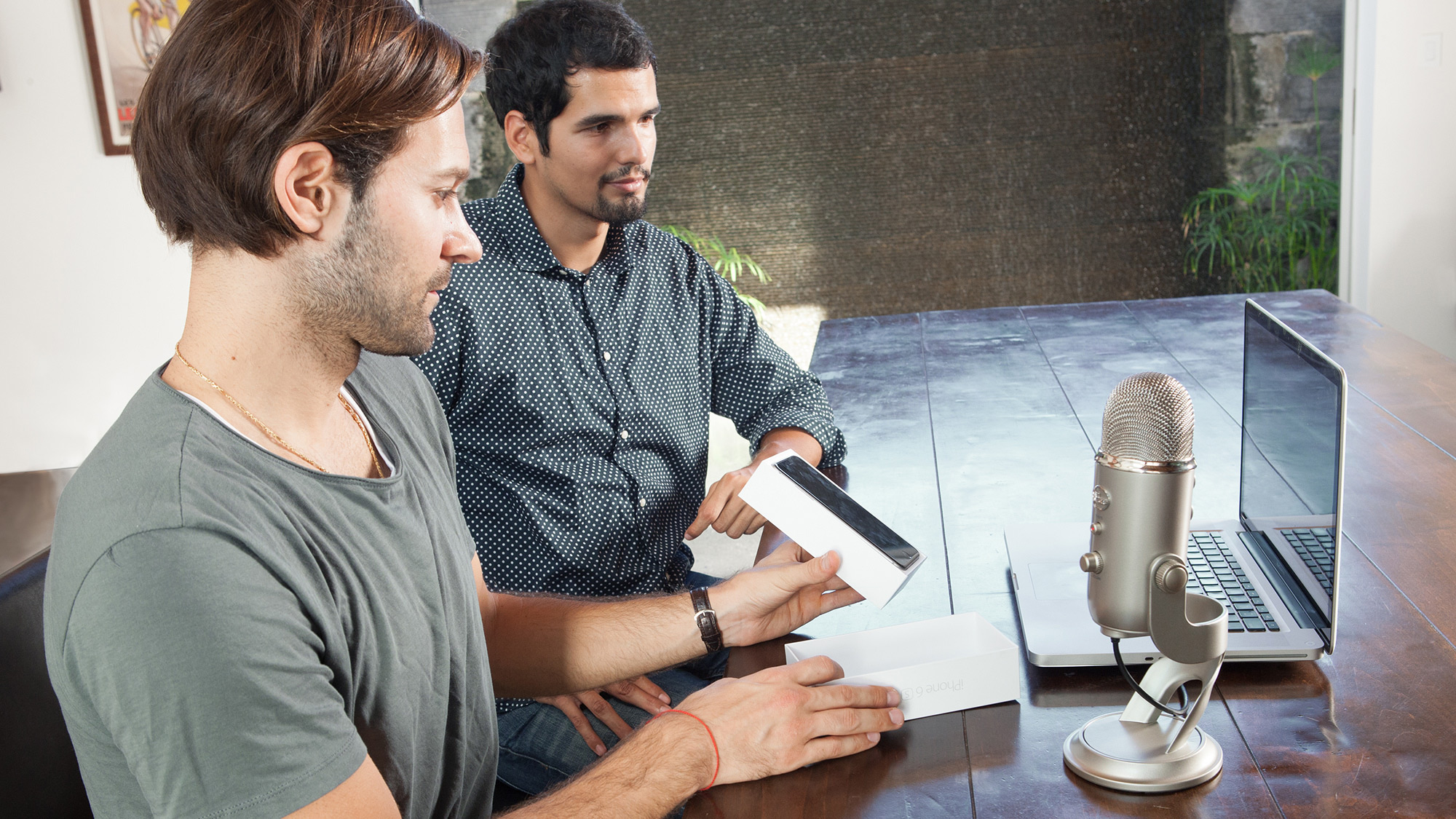
Which mic brands should I look out for?
When you're in the market for a budget USB microphone, a few key considerations should guide your decision-making. If you peruse various global retailers, you'll stumble upon a multitude of budget-friendly, look-alike microphones that, let's be generous, could be labelled as 'basic.' For better results, if your budget permits, it's wise to gravitate towards established brands. Names like Shure, Rode, IK Multimedia, and Blue boast a rich pedigree in this category, and their microphones are known to consistently deliver excellent performance.
What types of budget USB microphone are there?
USB microphones typically come in two distinct 'flavours': dynamic and condenser. Dynamic microphones are generally more rugged and robust, ideal for capturing loud sound sources like electric guitar amps. However, they may lack the finesse needed for pristine speech recordings. If your aspirations revolve around podcasts and voice streaming, a condenser microphone might be the more prudent choice.
Additionally, pay attention to the microphone's connectivity options. While a USB connection is a given (hence the name), you'll encounter micro USB or the more recent USB-C connections. The amount of data (the ones and zeros) the microphone processes for your computer isn't typically demanding enough to mandate a USB-C connection, but considering the prevalence of this connection in newer devices, it might be a future-proof choice. Moreover, USB-C connections tend to be more stable at the connection point, reducing the risk of accidental disconnection during critical moments during your recordings.
What extras do you need for a budget USB microphone?
Finally, think of the form factor of the mic, and the accessories you’ll need to get the best out of it. If you’re keeping it in a static location, like a desktop, then a good quality mic stand or boom arm is essential. The mic you choose may come with one, but upgrading to one with a sturdy base might be something to consider in the future. Also, look out for any bundled software that comes with the mic. The fact they function by connecting to a computer means they’re designed to work with recording or streaming software, so it’s worth looking up what added extras you get for your money.
What are the disadvantages of USB microphones?
USB microphones for the most part are just as adept at capturing spoken word as a regular studio condenser or dynamic mic, but typically they're better at this than capturing instrument sounds for a couple of reasons. First of all, USB mics often have a limited frequency response versus traditional mics, great for helping cut out any low end rumble or high-frequency background noise, but not so great if you're capturing full bodied sources with a lot of frequency information.
Secondly they tend to lack headroom, which means they're not ideal for capturing loud sources. If you're planning on recording anything louder than the occasional excitable shout from a podcast guest, you might want to try a regular studio microphone instead of a USB-powered one.
How we test

Our testing process for USB microphones is a little different to our usual microphone testing process. USB mics play a very different role compared to most other recording microphones in the fact that they're more often designed to record a human voice than any type of instrument. They're also obviously designed to plug directly into a computer, so the amount (and type) of signal processing is also different to that of a regular mic.
While testing USB mics, for the aforementioned reasons, we've found it's best to focus on voice recording quality, then, often comparing these often cheaper microphones with similarly spec'd studio vocal microphones or standards in the podcasting arena.
When focusing on vocals we take into account how microphones handle artefacts like sibilance and what has been provided to cut down such an occurrence – a pop shield might well come with the microphone, either separately or built into it, for example. Podcasting mics also tend to come with other items like podcast recording software designed to get you up and running in the world of podcasting, a desktop mount to place the mic firmly next to your computer and (usually) some kind of carry case, so these are all taken into account when we look at value for money.
While podcasting mics are generally aimed at vocal recording, it's always good to stretch them a little in our tests to see whether they are any good at recording acoustic guitar or, more likely, singing. Having a flexible microphone that can be used for studio tasks as well as broadcasting your opinions can't be sniffed at, and some podcasting microphones are surprisingly adept at recording other instruments.
Obviously the final factor is price. USB mics tend to be cheaper than their studio equivalent so we take this into account with our overall findings and balance up whether it's worth paying more for a studio vocal mic and interface to get 'proper' BBC radio vocals for (sometimes) not that much more outlay.
Find out more about how we test music gear and services at MusicRadar.
Related buyer's guides
- Best podcast headphones: an essential tool for your podcast rig
- Best podcast mixers: the central hub of your podcasting setup
- Best podcasts hosts: including free podcast hosting options
Want all the hottest music and gear news, reviews, deals, features and more, direct to your inbox? Sign up here.
Chris Corfield is a journalist with over 12 years of experience writing for some of the music world's biggest brands including Orange Amplification, MusicRadar, Guitar World, Total Guitar and Dawsons Music. Chris loves getting nerdy about everything from guitar and bass gear, to synths, microphones, DJ gear and music production hardware.
- Matt McCrackenJunior Deals Writer
- Simon Fellows
- Chris Barnes
